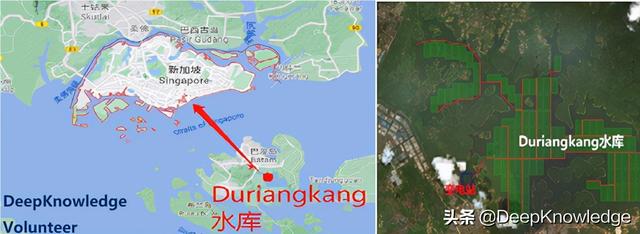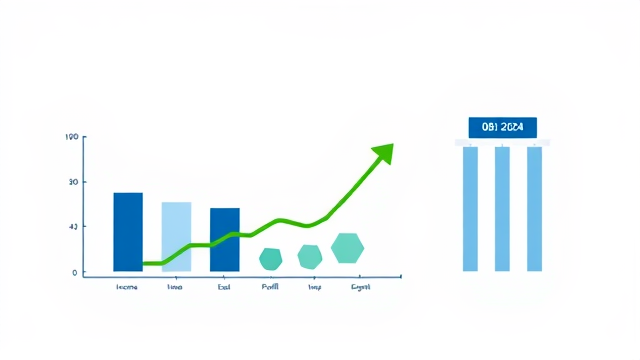新加坡数据中心可持续发展之路

新加坡数据中心可持续发展之路
Singapore's sustainability drive
新加坡在科技和可再生能源的探索研究,为各国数据中心走向可持续发展之路提供了很好的借鉴。
Research in technology and renewable energy in Singapore could blaze a path for more sustainable data centers around the world
October 14, 2021 Paul Mah
受到日益严重的环境问题、热带气候和激增的数字需求的推动,新加坡数据中心消耗了全国 7% 的电网电力,必须直面挑战。新加坡目前已暂停新建数据中心审批,并加速对节能型数据中心和可再生能源的研究和投资。
Pushed against the wall by growing environmental concerns, a tropical climate, and surging digital demand that sees data centers gobble up seven percent of the country’s grid power, Singapore has laid down the gauntlet. It has enforced a moratorium on new data centers and accelerated research and investments into energy-efficient data centers and renewable energy sources.

– Getty Images
尽管这些计划稍显狭隘,但所制定的技术创新和路线图很可能为世界各地-不仅在热带气候中实现更可持续的数据中心指明了方向。
But while the plans are decidedly self-serving, the technology innovations and roadmaps wrought could well blaze a path for more sustainable data centers not only in tropical climates but also around the globe.
捉襟见肘
Limited options
应对长期冷却热数据中心这一挑战的传统方法,是将其建造在温度较低的地方,或容易获得可再生能源的地方。但新加坡全年气候炎热潮湿,而且明显缺乏可再生能源选项。
The traditional approach to tackling the challenge of cooling hot data centers sustainably is to build them in places where the temperature is cold, or locations with easy access to renewable energy. But Singapore has a year-round climate that is both hot and humid - and renewable energy options are also decidedly lacking.
新加坡国家气候变化秘书处 (NCCS) 在其网站上列出了这个问题,指出目前几乎所有替代能源来源都不可行,因为缺乏快速流水(水电)、低平均风速(风电)和窄潮差(潮汐发电)。唯一可行的选择就剩太阳能,但即便如此还受到高云层覆盖和大规模部署太阳能电池板所需土地有限的阻碍。
The Singapore National Climate Change Secretariat (NCCS) set out the problem on its website, noting how practically every source of alternative energy is not currently viable, from a lack of fast-flowing water (hydroelectric), low average wind speed (wind), and narrow tidal range (tidal power). The only viable option is solar power, though even that is hampered by high cloud cover and limited land for large-scale deployments of solar panels.
对于数据中心行业而言,可持续性的有限选择极大地简化了决策。在排除不确定解决方案(例如安全核能、利用 LNG 冷能冷却数据中心以及进口低碳氢)之后,仅剩下两个近期选择:提高数据中心能源效率并加倍开发太阳能。
For the data center industry, the limited options for sustainability greatly simplified the decision metric. After discounting uncertain solutions – such as safe nuclear energy, harnessing LNG cold energy to cool data centers, and importing low-carbon hydrogen, just two near-term options remain: Increase data center energy efficiency and double down on solar energy.
水面敷设太阳能板
Solar over water
对太阳能的关注促成新加坡在2019年决定到2030年将该国的太阳能容量增加到峰值2GW (GWp)。新加坡是世界上人口最稠密的城市之一,其 56%国土面积是植被覆盖。为一个拥有近 600 万人口的国家建设所需巨大太阳能发电场的场地有限。
The focus on solar led to a decision in 2019 to increase the country’s solar capacity to 2-gigawatt peak (GWp) by 2030. But Singapore is one of the most densely populated cities in the world, of which 56 percent is covered by vegetation. There is limited space to build the vast solar farms needed for a country of almost 6 million.
部分光伏方案最常见的:全岛屋顶覆盖着太阳能电池板。然而,除此之外,还需要更多的太阳能电池板才行。植被用于碳汇,必须加以维护,因此这意味着可在水库和周边海域等广阔水面建造大型浮动太阳能发电场。目前最大的海上漂浮光伏 (PV) 电场之一和最大的内陆漂浮光伏电场之一已于今年投产,另外两个预计将于2021年晚些时候完工。
Part of the solution is almost banal: blanket rooftops across the island with solar panels. Beyond that, more solar panels are needed, however. Vegetation acts as a carbon sink and must be maintained, so this means building large-scale floating solar farms on large pools of water such as reservoirs and the surrounding sea. On this front, one of the largest offshore floating photovoltaic (PV) farms and one of the largest inland floating PV farms went live this year, with two more expected to be completed later this year.
即便是实现了2GWp的宏伟目标,与当前消费数据相比,也仅占新加坡总电力需求的4%,这远不及数据中心目前消耗的7%。这就是继太阳能计划后另一种方式:建设域外能源电网,并利用其为新加坡补充可再生能源。
But even that ambitious sounding 2GWp target will only amount to four percent of the country’s total electricity demand based on current consumption figures. This is nowhere near the seven percent currently consumed by data centers. This is where the next leg of the solar plan comes into play: Establish a network of regional energy grids and tap them for renewable energy.
其中一个关键举措7月份付诸行动,Sunseap集团(译注:新加坡最大的清洁能源解决方案提供商)与巴淡岛发展署(Badan Pengusahaan Batam)签署了谅解备忘录(MOU),在距离新加坡50公里的印度尼西亚巴淡岛上一个大型水库上建设世界上最大的浮动光伏发电场(译注:2.2GWp)。据 Sunseap称,一部分绿色能源在巴淡岛自用,而其余部分通过海底电缆出口输送到新加坡。
One of the key components fell into place in July, when Sunseap Group signed an MoU with Badan Pengusahaan Batam to build the largest floating PV farm in the world, on a large reservoir in Indonesia’s Batam Island, just 50km from Singapore. According to Sunseap, a portion of the green energy will be consumed within Batam while the balance can potentially be exported to Singapore via subsea power cables.

---示意图 DKV
这一开发项目有效地体现输出了Sunseap 在新加坡积累的浮动光伏电厂经验和优势:其在国内Tengeh水库的浮式太阳能系统试验装置中发挥了重要作用,该公司也在柔佛海峡建造了海上浮动系统(译注:5MW)。这是应对全球变暖的双赢解决方案。
This development effectively exports the floating PV farm expertise which Sunseap gained in Singapore: it played an instrumental role in a floating solar system testbed at Tengeh Reservoir and it built the sea-based floating system in the Straits of Johor. It’s a win-win solution to combat global warming.
实践是真正的检验
Putting the proof in the pudding
另一关键方面是提高数据中心的能源效率。2021年6月,新加坡政府和 Facebook宣布了合作开展一项总额1700万美元(2300 万新元)的项目,用于测试新型冷却技术。另一个可持续热带数据中心试验平台 (STDCT) 预计将于2021年10月开始运行。
Another key prong lies in enhancing the energy efficiency of data centers. In June 2021, that the Singapore government and Facebook announced a $17 million (S$23m) project to test novel cooling techniques. The Sustainable Tropical Data Centre Testbed (STDCT) is expected to start operation by October this year.
这并不是新加坡第一个探索热带数据中心概念的此类举措。热带数据中心 (TDC) 项目2016 年由当时的新加坡信息通信发展局(IDA)首次启动(注:IDA 和媒体发展局于 2016 年底合并为信息通信媒体发展局,简称 IMDA)。
This wasn’t the first such initiative in Singapore to explore the concept of a tropical data center. A Tropical Data Center (TDC) project was first initiated in 2016 by the then Infocomm Development Authority of Singapore (The IDA and Media Development Authority were merged late-2016 into the Info-communications Media Development Authority, or IMDA).
关于TDC的报道不多,但据知情人士透露,我们了解到它被认为是一个小型的概念验证POC。消息人士证实,该项目已于2019年完成。
Little has been published about the TDC, but from conversations with those in the know, we understand it was considered a small proof-of-concep. Sources confirmed it was completed in 2019.
DCD(DatacenterDynamics)认为STDCT可被设想为TDC工作的延续,以验证热带数据中心的最佳工作温、湿度设定值以降低能耗,同时确保IT设备的持续可靠性。
DCD understands that STDCT is envisioned as a continuation of the TDC work, to validate the optimal operating temperature and humidity setpoints in a tropical data center for reduced energy consumption while ensuring the continued reliability of IT equipment.
寻求更高的能源效率并非一个无意义的目标。正如世界其他地方的研究表明那样,效率的提高在某种程度上抵消了数据中心容量的大幅增长,而使用的能源总量却没有相应猛增。
The search for better energy efficiency is not a purposeless objective. As studies have shown elsewhere in the world, increased efficiency has to some extent offset a massive growth in data center capacity, without energy usage skyrocketing.
2014至2019年6年间,新加坡的总用电量增长了约 11%,从 2014 年的 46.4TWh 增加到 2019 年的 51.7TWh。期间新加坡数据中心的7%用电数字为了保持相同的份额,实际用电量在此期间也增长了11%。
The seven percent figure for data centers in Singapore was unchanged since 2014. Between 2014 and 2019, Singapore’s total electricity consumption went up by around 11 percent, from 46.4TWh in 2014 to 51.7TWh in 2019. To keep the same share, the actual power consumption of data centers also went up by 11 percent in that time.
这远低于通过提高能源效率可实现的白热化增长期容量的增长,其间容量增长远快于电力增长。根据两位不同研究人员的数据,2014年,Structure Research估计新加坡的装机容量为200兆瓦;2019年,世邦魏理仕(CBRE)发现新加坡达到了359 兆瓦容量,容量增加了大约80%。
This is far lower than the increase in capacity during a period of white-hot growth through better energy efficiency, in which capacity increased far faster than power. Taking figures from two different researchers, in 2014, Structure Research reckoned Singapore had 200MW of capacity; in 2019, CBRE found 359MW of capacity in the island. That gives approximately an 80 percent increase in capacity.
在北方的气候中,数据中心在接近室温的情况下运行。而验证在热带气候下的可行性是新加坡需要寻求的突破。假设数据中心能源消耗增加可以通过提高效率在一个季节内保持较低或持平,这意味着新加坡作为国际数据中心枢纽可以重新投入到数字基础设施竞争中,而不会因此面临天量的碳排放惩罚。
In Northern climates, data centers are run at close to room temperature. Validating the feasibility of doing this in a tropical climate might be the sort of breakthrough that Singapore needs. Assuming increases in energy consumption by data centers can be kept low or flat for a season by increasing efficiency, it means the data center hub can dive back into the digital infrastructure race without facing onerous carbon penalties.
建设更具可持续性的数据中心
Building more sustainable data centers
新加坡对可持续性和高能效数据中心的关注可能推动行业发展。具有讽刺意味的是,新加坡作为全球最具都市感和需要最多数字服务的城市同时面临最紧张的土地供应。世界上大多数人口都位于海岸附近,利用现有水面建造的浮动太阳能电池板的可行性将使这些城市从中受益。
Singapore’s focus on sustainability and energy-efficient data centers has the potential to move the needle for the industry, the largest and most metropolitan cities that require the most digital services are also those that face the tightest supply of land. Given the majority of the world’s population lives close to the coast, a viable blueprint to leverage floating solar panels built on existing reservoirs can benefit these cities.
此外,关于在不降低可靠性或设备寿命的情况下,在机房较高温度下运行数据中心的考量将使各方受益。作为 STDCT 的一部分,其他相关研发路径正在进行中,包括对机架进行闭回路循环水冷却,这更节能并消除了传统冷却塔固有的水耗。
Moreover, insights about running data centers hotter without degradation in reliability or equipment lifespan will benefit everyone. Other related avenues of research are ongoing as part of the STDCT, including closed-loop water cooling to the rack, which is more energy-efficient and eliminates the water wastage inherent in traditional cooling towers.
由于暂停令限制新设施导致数据中心供应减少,这就引出了一个问题,即重新开发既有设施实现更高能效是否有意义?虽然乍一看听起来会可笑,但也许金融措施和技术支持可以激励并规范将老一代数据中心重新开发改造为更节能的设施。并且可以通过分期升级数据中心来实现。
As data center supply dwindles because the moratorium blocks new facilities, this begs the question of whether it would make sense to redevelop existing facilities to support higher energy efficiency? While it sounds ludicrous at first blush, perhaps financial incentives and technical support can serve to incentivize – and normalize – the redevelopment of older generations of data centers into more energy-efficient facilities. And it can be done by upgrading the data center in sections.
新加坡也看到了升级旧有设施的可能模式。据新加坡商业评论 (SBR) 报道,普林斯顿数字集团 (PDG) 去年成功将其收购的前 IO 新加坡数据中心改造为由模块化空间(从 IO 继承沿用)和高架地板白空间组成的混合管理环境。这是在未影响客户停机的情况下完成的 - SBR 为此给它颁发一个奖项。
Singapore has seen a possible model for upgrading old facilities, too. According to Singapore Business Review (SBR) Princeton Digital Group (PDG) last year successfully converted the former IO Singapore data center that it acquired into a hybrid management environment made up of both modular space (Inherited from IO) and whitespace-raised floor setups. It was done without service downtime for existing clients - and SBR gave it an award.
随着极端天气在欧洲、中国东部、美国西部和其他地方蔓延,每个比特都对社会有意义。虽然我们无法离开数字服务,但数字化竞赛不应以牺牲环境为代价。
As extreme weather patterns inundate Europe, East China, the US West, and elsewhere, every bit helps. While we can no longer do without digital services, the race to digital does not have to come at the expense of the environment.
深 知 社
翻译:
Eric
DKV(Deep Knowledge Volunteer)计划创始成员
公众号声明:
本文转自网络,并非原文官方认可的中文版本,仅供国内读者学习参考,不得用于任何商业用途,文章内容请以英文原版为准。中文版未经公众号DeepKnowledge书面授权,请勿转载。





















评论